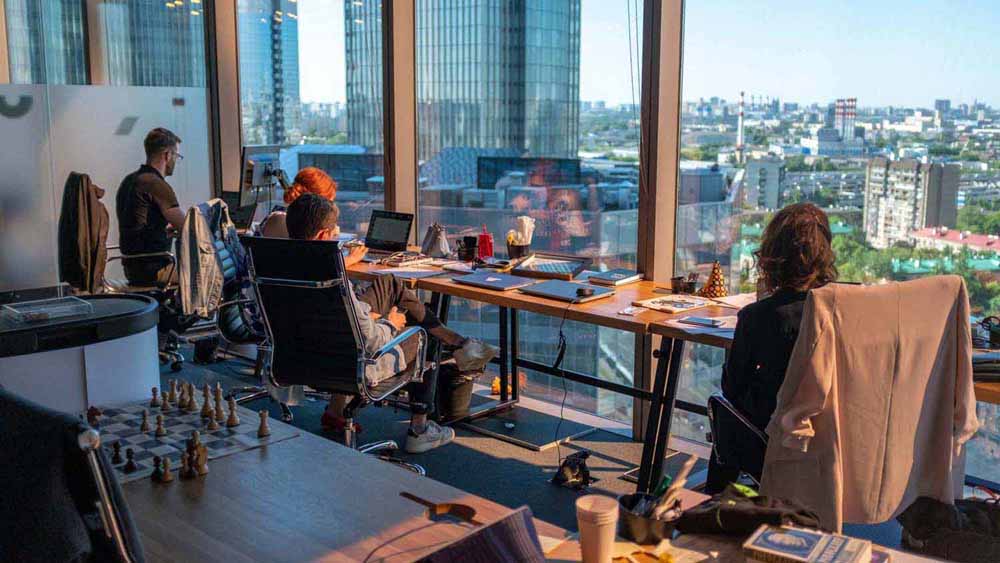We at FreeAxez think and write a lot about organizational culture. We’ve wholeheartedly embraced the concept of social responsibility and pride ourselves on our business ethics. You might be wondering how the raised access flooring industry correlates with topics such as workplace trends in 2020. Nothing is ever built but from the ground up—all things must be found upon an unyielding foundation if we expect them to stand the test of time, whether they be tangible or intangible.
Today, adults spend approximately one-third of their life working. To put that in better perspective, the average person will have worked around 90,000 hours during their lifetime. That equals 2,250 work weeks (or just over 50 years). Many people have since given up on their retirement dreams; some by necessity and others by choice.
It’s likely we’re facing a future where individuals stay in the workforce closer to 60 years. It goes without saying that this is having a significant effect on the workforce overall. And that’s not the only determinant affecting today’s modern workforce; societies continue to become more diverse, forcing employers to reevaluate established organizational norms and replace them with a workplace culture that is more flexible and inclusive. For executives and managers to achieve this, they will need to adopt a number of culture-changing trends. This article covers some but not all of the top workplace culture trends to look out for in 2020.
1. Digital Wellbeing in the Workplace: Learning to “Turn Off” and Do Nothing
With more of our work performed using digital tools, the issue of people not disconnecting from those tools (turning off) is a major concern. Psychologists and scientists are just now beginning to gain a clear understanding of the long term effects of continuous connectivity. Mary Chayko, communications and information professor at Rutgers University, told the Pew Research Center in an interview:
“As we see our devices and world become ever more tightly networked and interconnected and recognize the inherent security vulnerabilities in such a system, we become more psychologically and emotionally vulnerable.”
Due to these vulnerabilities, we believe in 2020 we’ll begin to see more employers discussing “turning off” and encouraging employees to leave work alone once official working hours are over. They could possibly do things like eliminating company emails after a certain time by disabling the email server. Any mobile applications used for work will have limitations, such as only being accessible during office hours. Of course, there are numerous other ways organizations can promote digital wellbeing—these are but a few examples.
2. Having More Conversations About Mental Health in the Workplace
In 2019, the World Health Organization (WHO) officially added burnout in its handbook of diseases entitled International Classification of Diseases (ICD). WHO defines burnout as a syndrome caused by chronic workplace stress. In particular, burnout syndrome is directly linked to “chronic workplace stress that has not been successfully managed,” even though other life influences are likely to play a significant role as well.
It should also be noted that WHO doesn’t classify burnout as a medical condition, contrary to initial media reports. All the attention given to burnout syndrome by the media allowed experts to begin the long-overdue dialogue concerning mental health in the workplace. However, some enterprises were ahead of the times and have been providing their employees with onsite mental health care for a few years now. Fortune listed some of those companies as being Goldman Sachs, USAA, CHG Healthcare Services, CustomInk, QuikTrip, and a few others.
3. People-Centric and Future-Proof Workplaces
Traditional workspace models from the Second Industrial Revolution (mid-19th century until the early 20th) no longer fit in today’s fast-paced digital world. In 2020, we’ll see this issue take center stage among real estate developers, facility managers, architects, interior designers, contractors, and engineers. The next five years or so will be marked by exponential growth and development in the aforementioned sectors as newer and better technology is introduced. It’s very likely that a decade from now the traditional workspace as we know it today will only exist within the pages of history.
For over 25 years, FreeAxez has worked with clients such as Walmart, ESPN, Bank of America, Visa, Google, the United States government, and a long list of others. These organizations have always been run by forward-thinking leadership and, thus, have been leaders in designing agile workspaces for decades.
And we’ve been right there with them.
The award-winning, revolutionary Gridd® Adaptive Cabling Distribution System® was and still is ahead of its time. Long before the term adaptive workspace became a trending topic, FreeAxez was leading the cable management industry with its cutting edge low profile access floor systems. We’ve long understood the importance of building office spaces capable of quickly adapting to future changes, no matter what they might be.
Future-proofing, sustainability, inclusion, ease-of-access, and structural intelligence are at the very heart of the Gridd® design. To learn more about workplace trends in 2020 and about how FreeAxez can help transform your office space into an adaptive workspace of the future, contact one of our experts today.

